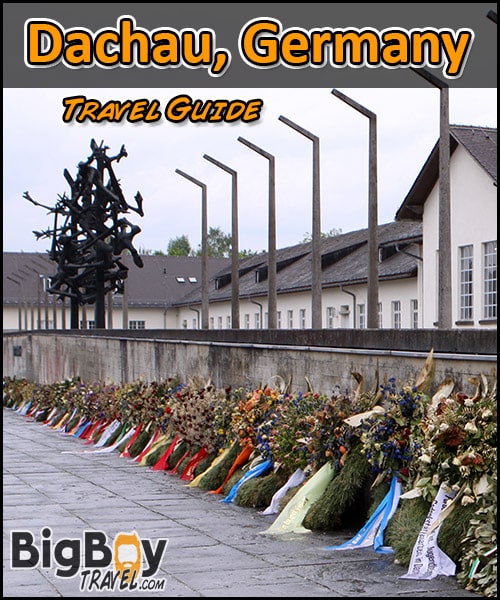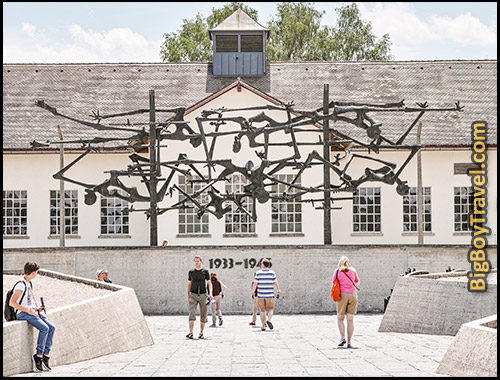Dachau Concentration Camp Tours:
Founded In: Settled by Celts in 1000 BC; officially founded in 805; market rights in 1182.
Name Meaning: Dachau means “loamy meadow” in Celtic.
Language: German (Deutsch), plus a little English.
Suggested Length of Stay: A half day to a full day.
Getting Here: How To Get To Dachau From Munich.
Dachau is a small suburb of Munich with a number of worthwhile attractions. The village was founded in 805 and still has some of its Medieval core preserved. Dachau big break came in 1182 when Duke of Bavaria Otto I (House Wittelsbach) bought the village and made Dachau Palace his family’s seat of power (formerly in Aichach). Just a generation later the family would famously move to Munich where they continued the rest of their nearly 750 riegn (1180–1918) over Bavaria as Dukes, then Electors, and later Kings.
Among the beauty and small-town feel, it was the ghostly Nazi concentration camp that has really put Dachau on the modern tourist map. A visit is bound to be moving and educational, but moreover it is an emotional way of experiencing history that will stick with you.
Overview Of The Dachau Memorial:
Once a Nazi Labor Camp, this site is now a chilling reminder of the horrors of the Holocaust. Hitler ordered the construction of the camp in 1933 and over the following 12 years, it became home to over 200,000 prisoners from 34 nations. The addition of prisoners began with the Jews and quickly escalated to openly gay people, plus anyone with opposing political views such as Socialists and Communists. In the early days of the labor camp, Hitler even called it the School of Violence for Nazi SS members. While the gas chambers at Dachau weren’t used, prisoners were crammed into bunks, starved to look like walking skeletons, and the crematorium was used very often to dispose of the fallen.
Luckily on April 29th, 1945 the US Army arrived to liberate Dachau’s concentration camp setting the prisoners free. The Camp largely sat empty until it was turned into a memorial site in 1965. Like many other Nazi sights around Germany, the Concentration Camp was turned into a living memorial to remember visitors of the horrors of the past so they are never repeated again. A large plaque inside brings this power message alive as the phrase Never Again is written in 5 languages.
As you the camp enter you’ll be struck by the same gate prisoners walked through marked with the German phrase Arbeit Macht Frei, meaning Work Will Set You Free. This couldn’t have been further from the truth as life in the camp was hell. The old administration building has been turned into a large museum highlighting photos and stories of everyday life in the Camp as well as details on the horrors it involved and the 32,000 people who died here. The short films and personal items from former prisoners are especially moving. After spending time exploring the museum, move on to the cramped labor bunkers, gas chambers (which were never used), and the crematorium (which was used often). As you pass from place to place elements of the original barbed wire fences and death rail train tracks drive home the emotional impact of the historic site. Visiting the Dachau Concentration Camp is often a life-changing experience for tourist and locals alike. While the initial part of your visit can be emotional, overall it is an educational experience that shouldn’t be missed while in Munich.
Visiting Hours: Daily 9am-5pm. Admission Cost: Camp is free, optional audio guide is 4€. Dachau Tours: Free English tours are offered at 11am & 1pm; additional 12:15pm slot on weekends in the Summer. Parking: Cars and Motorcycles 3€. Museum Website: (HERE).







